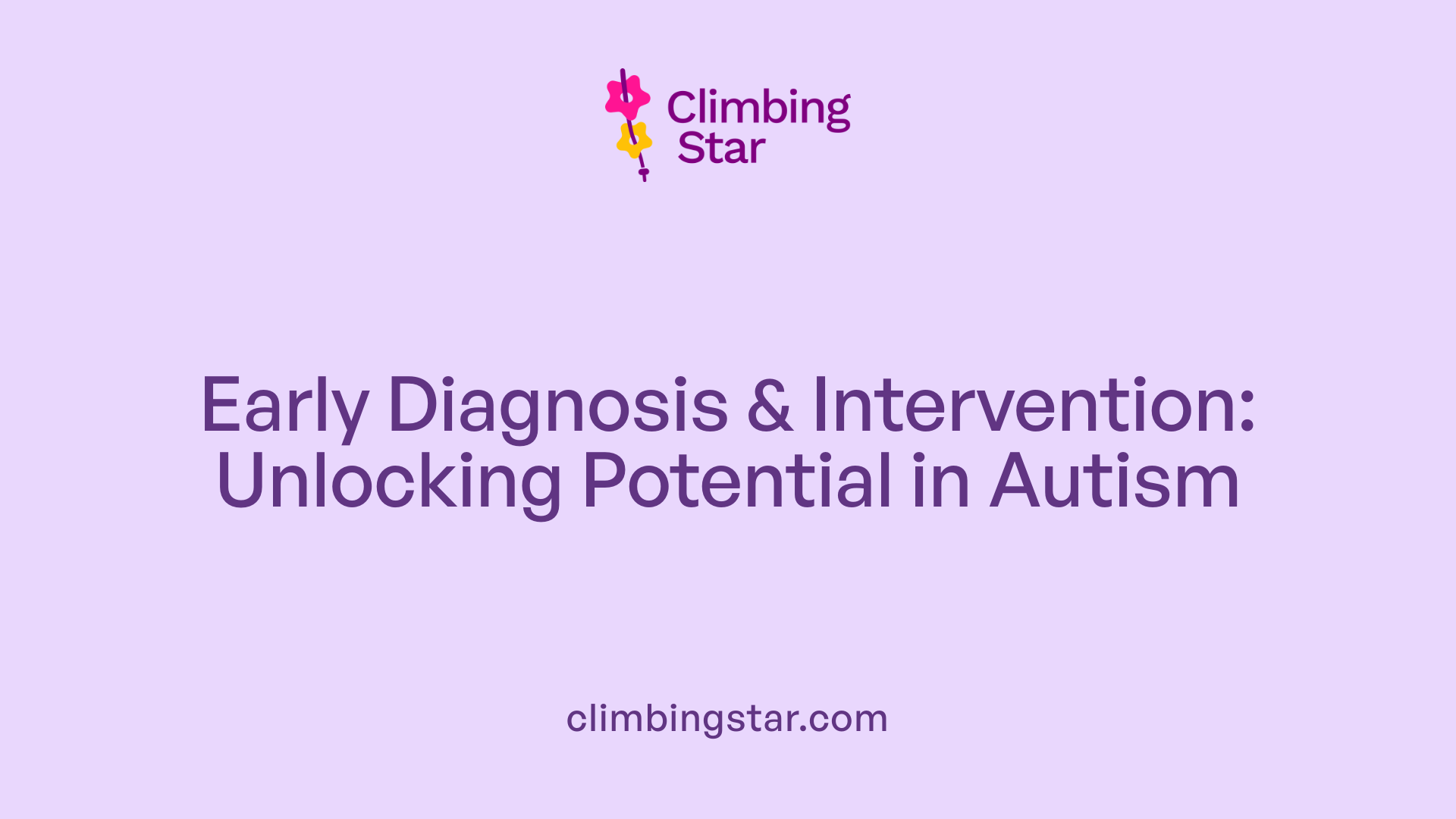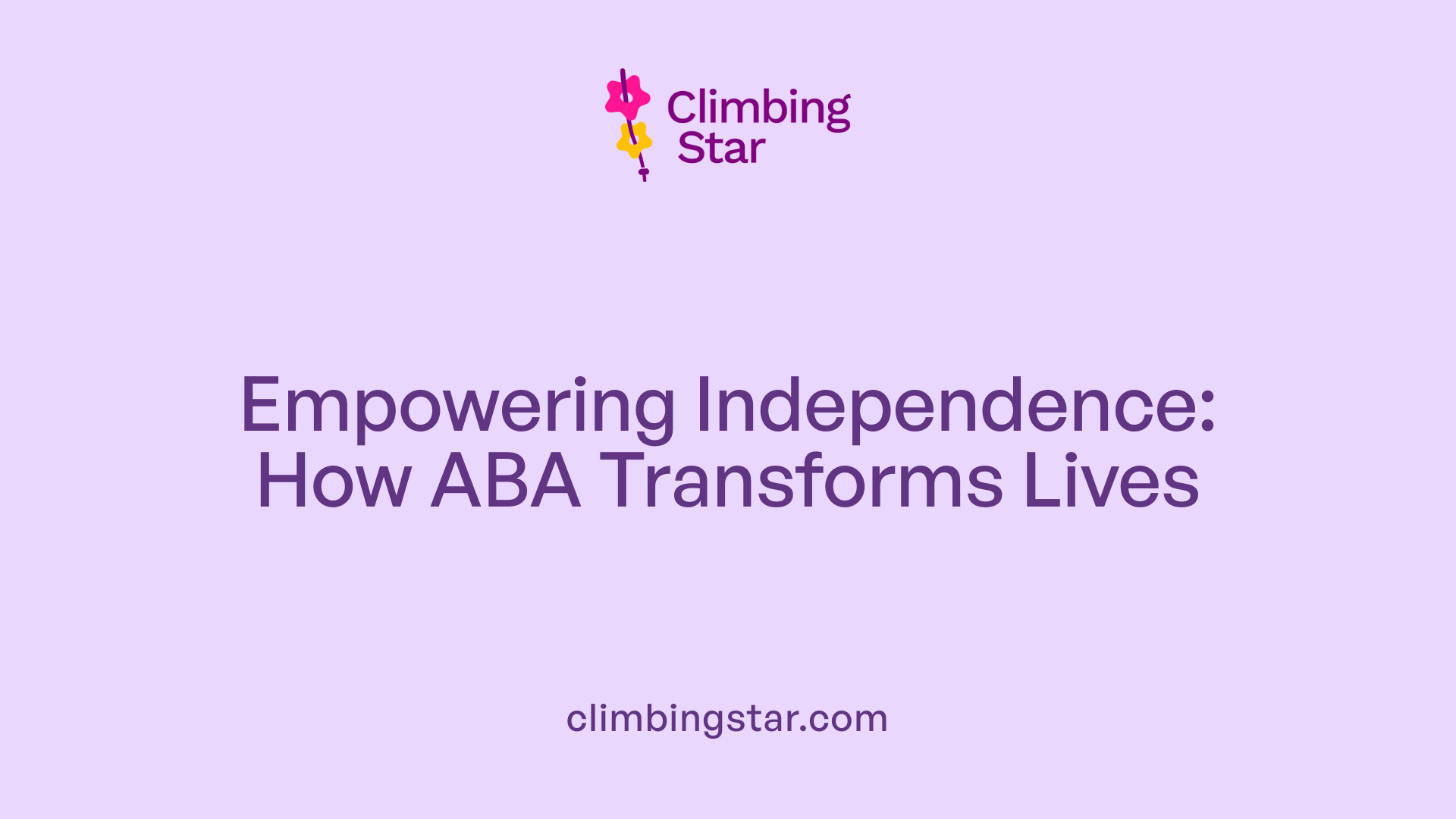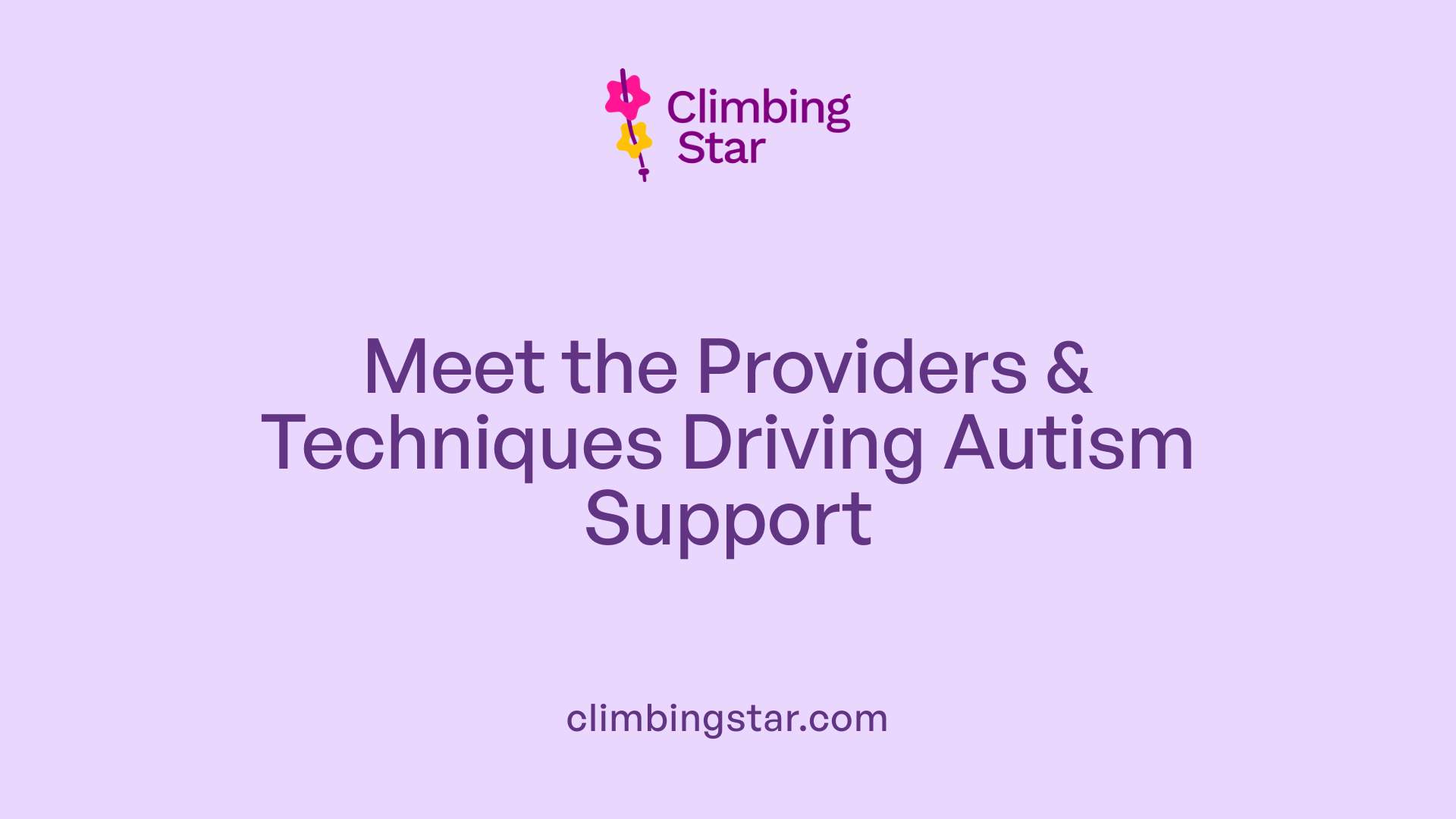Recognizing the Spectrum: April's Commitment to Autism Acceptance
World Autism Month, culminating on April 2nd with World Autism Awareness Day, is a global initiative dedicated to increasing understanding, acceptance, and support for individuals with autism spectrum disorder (ASD). This observance emphasizes the importance of embracing neurodiversity, fostering inclusive environments, and highlighting evidence-based therapies that enhance quality of life for autistic individuals. Through education, advocacy, and community involvement, World Autism Month serves as a catalyst for positive change across families, schools, workplaces, and society at large.
Understanding Autism and the Importance of Early Intervention

What is autism spectrum disorder and how common is it?
Autism spectrum disorder (ASD) is a neurodevelopmental condition marked by challenges in communication, social interaction, and behavior. ASD manifests differently in each individual, highlighting a broad range of abilities and support needs. According to the CDC, about 1 in 36 children in the United States receives an autism diagnosis. ASD occurs more frequently in males, with a ratio of roughly 4:1 male to female.
Why is early diagnosis and intervention important?
Early diagnosis is vital for unlocking the potential benefits of intervention during crucial developmental stages. Though ASD is lifelong, starting early therapy can significantly boost communication, social skills, and adaptive behaviors. These programs help reduce reliance on future support services, promoting greater independence and quality of life. Furthermore, timely intervention also decreases the expected lifetime care costs by an estimated two-thirds.
What types of early intervention programs are available?
Several evidence-based therapies assist children with autism, often tailored to meet individual needs:
- Applied Behavioral Analysis (ABA): Focuses on increasing positive behaviors and teaching new skills using reinforcement techniques.
- Speech Therapy: Enhances communication abilities, both verbal and nonverbal.
- Occupational Therapy: Supports sensory integration and daily living skills.
- Social Skills Training: Helps develop appropriate social interactions and relationships.
These programs are typically designed to cater to various developmental stages, ensuring interventions support foundational skills through to school readiness and self-advocacy.
Overall, recognizing ASD early and engaging with suitable therapies can vastly improve lifelong outcomes for autistic individuals.
Autism Acceptance: Beyond Awareness Towards Inclusion and Support

What does autism acceptance involve?
Autism acceptance means recognizing and embracing neurodiversity by appreciating the unique strengths and needs of autistic individuals. Unlike focusing on curing autism, acceptance emphasizes respect and support for diverse ways of thinking and behaving. This includes normalizing common autistic behaviors such as stimming, and providing environments tailored to sensory sensitivities and communication preferences.
How do families practice autism acceptance?
Families play a vital role by creating safe and understanding home spaces. They develop sensory-friendly areas that reduce overstimulation and establish predictable routines that provide comfort. Celebrating the special interests of autistic family members and supporting intersecting identities, including LGBTQIA+ identities, fosters a sense of belonging and self-worth.
How do therapeutic settings embrace autistic identities?
Modern therapies recognize autism as a fundamental part of identity. Therapy focuses on supporting sensory regulation and accommodating communication differences without aiming to "cure" autism. Techniques such as Applied Behavioral Analysis (ABA) have evolved to use positive reinforcement and prioritize independence, social interactions, and family involvement.
What accommodations are made in medical and workplace environments?
Medical settings promote acceptance by offering multiple communication options, creating sensory-friendly spaces, and ensuring clear explanations. Workplaces support neurodiversity through flexibility in schedules, offering specific accommodations, and providing training to increase neurodiversity understanding among employees.
What are societal benefits of promoting autism acceptance?
When society embraces neurodiversity, it challenges stereotypes and includes autistic voices in important decisions, leading to more equitable and inclusive communities. This acceptance fosters policies and public attitudes that enhance opportunities and wellbeing for autistic individuals.
| Setting | Acceptance Practices | Benefits |
|---|---|---|
| Family | Sensory-safe environments, celebrating interests, routine support | Emotional security, normalized behavior |
| Therapy | Identity affirmation, sensory regulation, positive reinforcement | Improved communication and independence |
| Medical | Communication options, sensory-friendly spaces, clear communication | Reduced stress, better medical outcomes |
| Workplace | Accommodations, flexible scheduling, neurodiversity training | Increased inclusion, productivity |
| Society | Promoting neurodiversity, challenging stereotypes, autistic participation | Greater equity, richer community dialogue |
Autism acceptance moves beyond awareness and toward meaningful inclusion by embracing diversity and providing tailored support everywhere autistic individuals live, learn, and work.
The Role of Applied Behavior Analysis (ABA) Therapy in Autism Treatment

What is Applied Behavior Analysis (ABA) therapy?
Applied Behavior Analysis (ABA) therapy is a scientifically supported intervention designed to improve socially significant skills and reduce challenging behaviors in individuals with autism. It focuses on analyzing the antecedents, behaviors, and consequences (the A-B-Cs) to create personalized treatment plans. ABA uses positive reinforcement and naturalistic teaching methods to encourage desirable behaviors.
Customization and delivery of ABA
ABA therapy is highly individualized, tailored to each person's strengths and needs. It can target areas like communication, social skills, academics, and daily living tasks. Therapy plans evolve based on ongoing assessments, ensuring the approach remains relevant and effective.
Therapy settings and providers
ABA is delivered in various environments including homes, schools, and community settings. Board Certified Behavior Analysts (BCBAs) lead the development and supervision of treatment plans, ensuring evidence-based and ethically sound practices. Therapy sessions often follow developmental stages, such as building foundational social and communication skills for young children and fostering self-advocacy in older children.
Family involvement in ABA
Families play a crucial role in ABA therapy by reinforcing skills and strategies across multiple settings. Engaged family participation enhances the consistency and generalization of learned behaviors, improving overall outcomes and promoting greater independence for the individual with autism.
How ABA Therapy Supports Individuals with Autism

ABA techniques and methods
Applied Behavioral Analysis (ABA) utilizes several evidence-based techniques designed to promote learning and positive behavior changes in individuals with autism. Core methods include:
- Positive reinforcement: Rewarding desired behaviors to encourage their repetition.
- Discrete Trial Training (DTT): Breaking skills down into small, teachable steps taught in structured sessions.
- Natural Environment Training (NET): Teaching skills within everyday settings to promote generalization.
- Prompting and fading: Guiding behaviors initially and gradually reducing assistance.
These approaches are tailored to each individual's needs after a comprehensive evaluation by a Board-Certified Behavior Analyst (BCBA).
Goals of ABA therapy in autism
ABA therapy aims to enhance independence and enrich social interactions rather than enforcing rote behaviors. The main goals are:
- Improving communication abilities.
- Developing social skills and peer engagement.
- Encouraging adaptive skills for daily living.
- Reducing behaviors that cause harm or interfere with learning.
Families play an essential role in therapy success by reinforcing skills across home and community settings.
Early intervention benefits
Starting ABA therapy early, particularly before the age of four, significantly improves outcomes. Early intervention can:
- Boost communication and cognitive development.
- Increase social engagement.
- Reduce reliance on extensive future support.
- Enhance overall quality of life.
These benefits are supported by numerous studies demonstrating the effectiveness of ABA when initiated promptly.
Skill areas targeted
ABA programs are customized to target key developmental stages:
| Age Group | Focus Areas | Description |
|---|---|---|
| 2-5 years | Foundational social and communication skills | Building basic language, eye contact, and imitation abilities essential for later learning. |
| 3-6 years | School readiness skills | Teaching following instructions, cooperation, and classroom behavior to prepare for formal education. |
| 5-10 years | Social self-advocacy and problem-solving | Developing independence, self-advocacy, and complex social problem-solving. |
This structured progression helps individuals with autism reach their full potential in diverse settings.
Overall, ABA therapy, rooted in behaviorist principles and continuously evolving with a focus on positive reinforcement, is a cornerstone intervention improving life trajectories for many individuals on the autism spectrum.
Providers and Techniques: The Professional Landscape of ABA Therapy

Who typically provides ABA therapy services?
ABA therapy is primarily delivered by professionals who are specially trained in behavior analysis. The main providers include Board Certified Behavior Analysts (BCBAs) who design and oversee treatment plans. Registered Behavior Technicians (RBTs) often carry out the day-to-day therapy sessions under BCBA supervision. These providers usually work within specialized agencies or clinics focused on autism interventions.
To create effective individualized treatment plans, providers use formal assessment tools like the Verbal Behavior Milestones Assessment and Placement Program (VB-MAPP) and Functional Behavior Assessments. Collaborating with families is a key part of the process, ensuring skills are reinforced naturally in everyday environments. Many providers also work to maintain accessibility by partnering with insurance companies and offering private pay options.
What are the typical methods or techniques used in ABA therapy?
ABA therapy employs a wide range of evidence-based techniques tailored to each individual. Some common methods include:
- Discrete Trial Training (DTT): Breaking down skills into small, manageable parts taught in a structured environment.
- Natural Environment Teaching (NET): Teaching skills within the context of daily routines.
- Behavior Chaining: Linking simple behaviors to form complex actions.
- Prompting and Fading: Providing cues that are gradually removed as independence grows.
- Modeling: Demonstrating behaviors to encourage imitation.
- Reinforcement Strategies: Using positive reinforcement to encourage desirable behaviors and reduce unwanted ones.
Visual supports, like video modeling and the Picture Exchange Communication System (PECS), are frequently incorporated to aid understanding. Modern ABA therapy strictly emphasizes positive reinforcement and completely avoids any aversive or punitive techniques.
Emphasis on positive, ethical therapy
Today’s ABA places high importance on ethical treatment approaches. The goal is to promote independence and encourage personalized social interactions, not just to enforce rote behaviors. Therapy plans are designed with respect for the individual’s dignity and identity, avoiding the outdated notion of 'curing' autism. Family involvement is strongly encouraged to enhance the consistency and effectiveness of therapy across different settings.
| Aspect | Details | Notes |
|---|---|---|
| Providers | Board Certified Behavior Analysts (BCBAs), Registered Behavior Technicians (RBTs) | Work in clinics/agencies; collaborate with families |
| Assessment Tools | VB-MAPP, Functional Behavior Assessments | Used to tailor individualized treatment plans |
| Techniques | Discrete trial training, natural environment teaching, behavior chaining, prompting | All centered on positive reinforcement |
| Ethical Considerations | Avoidance of aversive methods; respect for autism as identity | Modern ABA is non-punitive and family-inclusive |
| Family Role | Critical for generalizing skills across environments | Strengthens therapy outcomes |
The Scientific Foundation and Community Impact of ABA and Autism Advocacy
What is the evidence supporting the effectiveness of ABA therapy in autism treatment?
Applied Behavioral Analysis (ABA) therapy is supported by extensive research demonstrating its effectiveness in improving social, communicative, and adaptive skills among children with autism. Studies show that early and intensive ABA interventions—especially when started before age four—can significantly boost communication abilities and promote independence.
ABA sessions are tailored to different age groups, focusing on foundational skills for toddlers, school-readiness for young children, and social problem-solving for older kids. Modern ABA emphasizes positive reinforcement techniques and personalized social interaction goals, distancing itself from earlier controversial methods.
The therapy’s strong scientific backing is recognized by professional organizations such as the U.S. Surgeon General and the American Psychological Association. They endorse ABA as an evidence-based approach that enhances cognition, language, and social functioning, though it is not considered a cure for autism. Family involvement further strengthens therapy outcomes by supporting children across diverse environments.
Role of research inclusion and neurodiversity advocacy
In autism research and therapy, inclusion of autistic individuals in the design and dissemination phases is essential. Using respectful, non-stigmatizing language and accessible communication ensures research benefits reach the autistic community.
Broad acceptance of autism as a neurodiverse identity guides therapeutic and societal approaches. Emphasizing strengths and accommodating sensory and communication needs aligns with neurodiversity principles, which improve outcomes by fostering dignity and respect.
Community activities during World Autism Month
World Autism Month features various activities to advance acceptance and understanding. Observed on April 2nd (World Autism Awareness Day), the month highlights themes like transition to adulthood, focusing on education, employment, and independent living challenges faced by autistic individuals.
Campaigns such as "Light It Up Blue" engage communities worldwide, lighting landmarks to raise awareness. Families, educators, and advocates participate by listening to autistic voices, educating about neurodiversity, volunteering, donating, and pushing for inclusive policies.
These efforts enrich community support networks and promote a kinder, more inclusive society where autistic individuals’ strengths are recognized and nurtured.
Moving Forward: Advocacy, Acceptance, and Empowerment in Autism
World Autism Month serves as a vital platform to deepen public awareness, celebrate neurodiversity, and promote evidence-based supports like ABA therapy that improve lives. Advocacy efforts encouraging acceptance rather than mere awareness foster more inclusive families, workplaces, schools, and healthcare settings. By embracing autistic identities and involving autistic voices in research and policy, society can challenge misconceptions and build pathways for better education, employment, and independent living. Through collective understanding and compassionate action during this month and beyond, the goal of a kinder, more inclusive world for autistic individuals comes increasingly within reach.
References
- What Does Autism Awareness and Acceptance Look Like ...
- Facts About Autism Awareness Month and Why It's Important
- Autism Awareness Month
- What is ABA Therapy?
- What is World Autism Awareness Day?
- Applied Behavior Analysis (ABA)
- 6 Benefits of ABA Therapy for Children with Autism
- Applied Behavior Analysis (ABA) for Children With Autism







